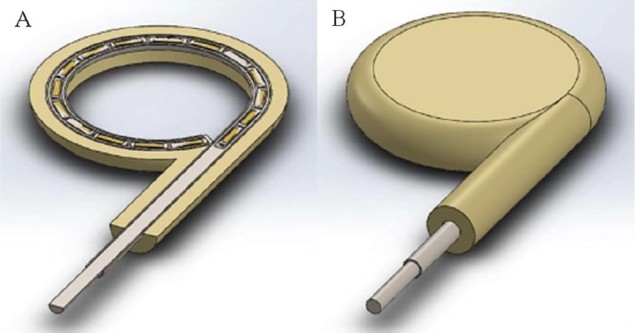Novel brachytherapy device treats eye cancer with intensity-modulated radiation – Physics World - Medical Physics Web

"That may be one of the reasons why people in the medical physics world are interested in getting a conformal brachytherapy treatment for the eye."
David Medich, an associate professor of physics at Worcester Polytechnic Institute, was explaining why internal radiation, or brachytherapy, may be preferable for treating ocular melanomas over external-beam radiation therapy: using brachytherapy to deliver radiation to an ocular tumour also protects healthy tissues and critical structures, like the optic nerve and retina, from radiation-induced damage.
Work recently reported in Physics in Medicine & Biology introduces a new device for intensity-modulated high-dose-rate brachytherapy. The device, designed by John Monro III, managing director of Montrose Technology Inc, and simulated by Medich's research group, delivers a more conformal treatment to ocular tumours than conventional brachytherapy approaches. The device would also shorten treatment from one to two weeks to less than 10 minutes.

Brachytherapy and ocular melanomas
Ocular melanoma, though rare relative to all other cancers, is the most common type of eye cancer in adults. Plaque brachytherapy treatments deliver radiation to eye tumours via radioactive sources called pellets or seeds, which are placed in a device called a plaque that is sewn onto the surface of the eye.
Plaque brachytherapy treatments can be low-dose-rate (LDR) or high-dose-rate (HDR). LDR brachytherapy plaques are sewn on the eye for days at a time and may require patient hospitalization. HDR plaque brachytherapy treatments, on the other hand, can be performed as outpatient procedures because radioactive pellets are only in the body for tens of minutes at a time.
Whether a brachytherapy treatment is HDR or LDR, most brachytherapy plaques do not modulate the intensity of radiation incident on a tumour, and there is little to no collimation. In other words, most plaques cannot be adjusted to precisely conform the delivery of radiation to the tumour, so some critical structures and healthy tissues will be irradiated.
New plaque to treat ocular melanomas
The new ocular plaque is thin and ring-shaped. It's made from gold, which is biocompatible and doesn't react with the body's tissues. The proposed plaque houses a series of ytterbium-169 pellets coated with stainless steel. Ytterbium-169 is a middle-energy source that emits photons with average energies of around 93 keV.
The properties of ytterbium-169 and gold have two consequences. First, the gold plaque can be used to attenuate photons emitted by the ytterbium-169 pellets and shield healthy tissues and critical structures. Second, a clinician can sew an empty plaque onto a patient's eye and then feed the ytterbium-169 pellets into the plaque remotely, eliminating any radiation dose that might otherwise be delivered to the clinician.
In addition, the new plaque, unlike most others used in ocular brachytherapy, can be adjusted to optimize how and where radiation is delivered to the eye – a clinician can select plaques that deliver radiation to tumours at different diameters and angles.
Simulation results
The researchers modelled the new HDR plaque and ytterbium-169 pellets in two computer code systems (MCNP and BrachyDose) and validated the plaque's performance against a commonly used LDR brachytherapy plaque and radiation source. They performed simulations for multiple tumour sizes and depths.

What is brachytherapy?
The new plaque reduced the dose absorbed by critical structures in the eye by up to 14%. Combined with its other advantages – shortened treatment time and reduced dose to a clinician – the researchers believe that this new plaque can feasibly treat ocular melanomas.
The researchers' next steps are to collect experimental data to validate the performance of the plaque in the lab and to experimentally determine a prescribed treatment radiation exposure that will produce a biologically equivalent tumour response relative to conventional treatment times.



Comments
Post a Comment